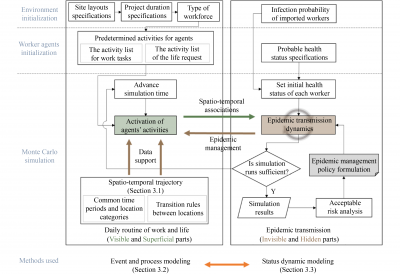URGENT UPDATE: New strategies for managing pandemics on construction sites are emerging, addressing critical challenges that threaten worker health and project timelines. As construction workers face significant infection risks due to close contact and labor intensity, officials are emphasizing the need for adaptive management strategies that go beyond traditional methods.
Just announced, these innovative strategies utilize agent-based modeling to provide scenario-specific insights that traditional statistical analyses have failed to deliver. The construction industry has long struggled with project delays, cost increases, and quality declines during pandemics, and experts are now pushing for immediate implementation of these new approaches.
Current research highlights that conventional post-causal inference methods, such as questionnaires and archival analysis, are insufficient in capturing the unique dynamics of construction sites. The focus has shifted toward more effective epidemic simulation models that take into account the semi-open outdoor spaces and distinct movement patterns of workers.
This new perspective is crucial, especially as construction projects worldwide continue to face disruptions. Authorities report that without these adaptive strategies, the industry risks further setbacks, leading to lost revenue and jeopardized worker safety.
Impact on worker health cannot be overstated—project managers and construction firms must act quickly to integrate these findings into their operations. The urgency for change is palpable as the construction sector grapples with ongoing pandemic-related challenges.
As the situation develops, industry leaders are urged to stay informed and prepared for further updates. The future of construction site management depends on swift adaptation and the adoption of these groundbreaking strategies.
Stay tuned for more updates on this evolving situation as new models and strategies emerge to safeguard workers and project integrity.






